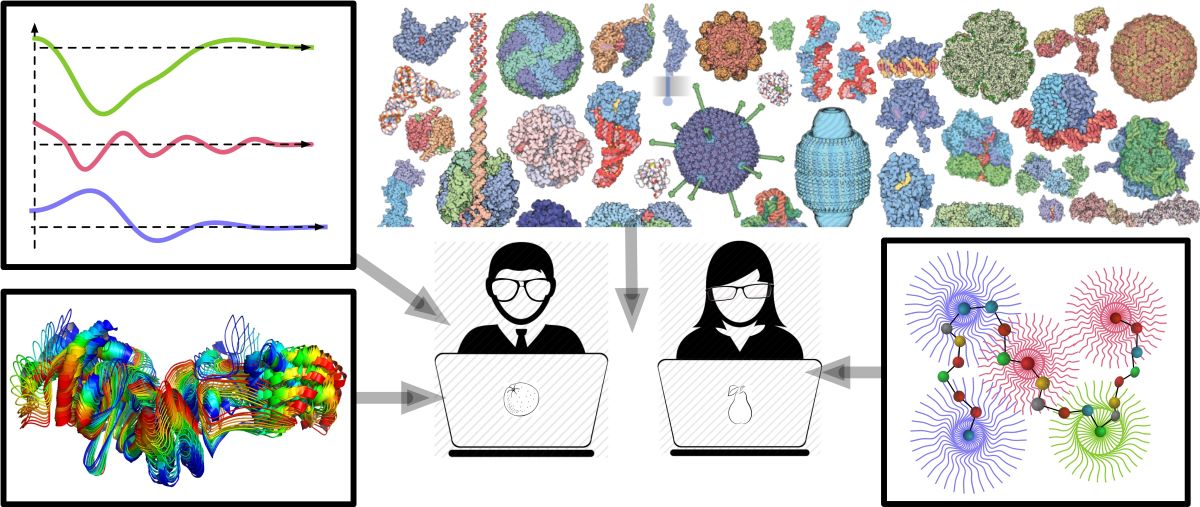Speakers
Description
Understanding the functions of protein-protein and protein-nucleic acid complexes relies on the knowledge of their 3D structures that can either be solved experimentally or predicted computationally. While AlphaFold has revolutionized protein structure prediction, challenges remain, particularly in modeling antibody-antigen interactions, protein-nucleic acid complexes, and proteins lacking close homologs. In these cases, docking can be employed to generate structure models. Consequently, effective methods for selection of the most accurate models are necessary.
Here we present FTDMP, a newly developed framework for protein-protein and protein-nucleic acid docking and scoring. The framework can be used in two ways: to perform docking and subsequent scoring, or to score and rank user provided models coming from different sources (AlphaFold, RoseTTAFold, docking, etc.). The ranking is done by a newly developed method, VoroIF-jury, that is based on the consensus of several scoring functions [1]. VoroIF-jury-based protocol obtained top results in the CASP15-CAPRI scoring experiment [2].
The full FTDMP docking and scoring framework was subsequently tested on protein-protein, protein-DNA, and protein-RNA docking benchmarks [3-5]. All the structures were downloaded directly from the PDB and renumbered, correcting several inconsistencies in the benchmarks’ datasets. Compared to currently available docking systems, FTDMP demonstrated improved results of the free unbound-unbound docking when the top-ranked model was considered. Moreover, the success rates were very high for bound-bound docking (up to 83% for the top prediction), which opens new application possibilities when the conformational changes upon binding are negligible. For example, rigid-body docking using FTDMP assisted the identification of high-quality models when AlphaFold and docking predictions were similar for hard CAPRI targets.
FTDMP can be used not only with the built-in, but also with external scoring methods. Thus, the framework can be employed for fast and straightforward evaluation of new scoring functions.
FTDMP, docking benchmarks and docking results are available at https://github.com/kliment-olechnovic/ftdmp.
[1] Olechnovič, K., et al. (2023). Prediction of protein assemblies by structure sampling followed by interface-focused scoring. Proteins, 91(12), 1724-1733.
[2] Lensink, M.F., et al. (2023). Impact of AlphaFold on structure prediction of protein complexes: The CASP15-CAPRI experiment. Proteins, 91(12), 1658–1683.
[3] van Dijk, M., Bonvin, A.M. (2008). A protein-DNA docking benchmark. Nucleic Acids Res, 36, e88.
[4] Guest, J. D., et al. (2021). An expanded benchmark for antibody-antigen docking and affinity prediction reveals insights into antibody recognition determinants. Structure, 29(6), 606–621.e5.
[5] Zheng, J., et al. (2020). P3DOCK: a protein-RNA docking webserver based on template-based and template-free docking. Bioinformatics, 36(1), 96–103.
| Submitting to: | 8th CAPRI assessment meeting |
|---|

